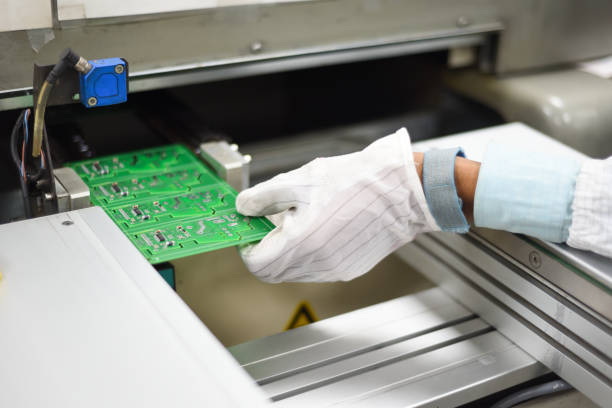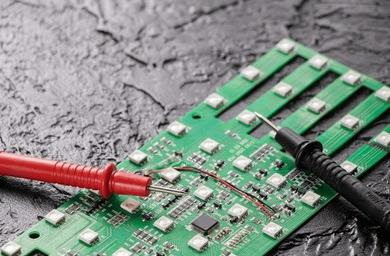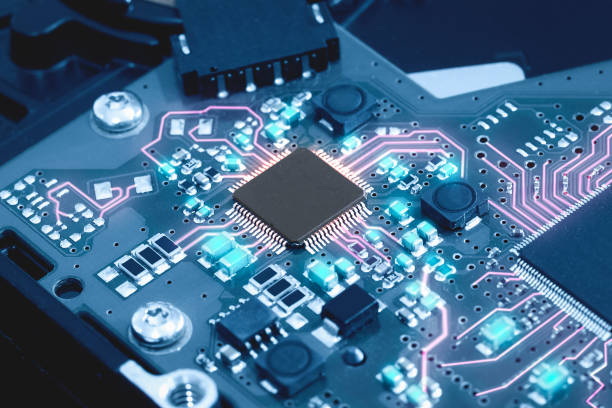Content Menu
● Understanding SMT and THT
>> What is Surface Mount Technology (SMT)?
>> What is Through-Hole Technology (THT)?
● Key Differences Between SMT and THT Components
>> 1. Size and Weight
>> 2. Mounting Process
>> 3. Electrical Performance
>> 4. Mechanical Strength
>> 5. Production Volume and Cost
● Advantages and Disadvantages of SMT and THT
>> Advantages of SMT
>> Disadvantages of SMT
>> Advantages of THT
>> Disadvantages of THT
● Applications of SMT and THT
>> SMT Applications
>> THT Applications
● Conclusion
● FAQ
>> 1. What are SMT components?
>> 2. What are the advantages of using SMT over THT?
>> 3. Are THT components more reliable than SMT components?
>> 4. Can SMT components be repaired easily?
>> 5. In what applications is THT preferred over SMT?
In the world of electronics, the choice of component mounting technology can significantly impact the performance, size, and cost of a product. Two of the most common methods for mounting electronic components on printed circuit boards (PCBs) are Surface Mount Technology (SMT) and Through-Hole Technology (THT). This article will explore the differences between SMT and THT components, their advantages and disadvantages, and their applications in modern electronics.

Understanding SMT and THT
What is Surface Mount Technology (SMT)?
Surface Mount Technology (SMT) is a method where components are mounted directly onto the surface of a PCB. SMT components are typically smaller and lighter than their through-hole counterparts, allowing for more compact designs. The leads of SMT components are soldered directly to pads on the PCB surface, eliminating the need for holes to be drilled through the board.
What is Through-Hole Technology (THT)?
Through-Hole Technology (THT) involves inserting component leads through holes drilled into the PCB. The leads are then soldered on the opposite side of the board. THT components are generally larger and provide a more robust connection, making them suitable for applications that require high durability and reliability.
Key Differences Between SMT and THT Components
1. Size and Weight
One of the most significant differences between SMT and THT components is their size. SMT components are much smaller and lighter, which allows for higher component density on a PCB. This is particularly advantageous in compact electronic devices such as smartphones and tablets.
2. Mounting Process
The mounting process for SMT and THT components differs significantly. SMT components are placed on the PCB surface and soldered using reflow soldering techniques, while THT components require manual insertion into drilled holes and are typically soldered using wave soldering or hand soldering methods.
3. Electrical Performance
SMT components generally offer better electrical performance due to their shorter lead lengths, which reduce inductance and resistance. This is particularly important in high-frequency applications where signal integrity is critical.
4. Mechanical Strength
THT components provide greater mechanical strength due to their leads being secured through the PCB. This makes them ideal for applications that experience physical stress, such as automotive and industrial equipment.
5. Production Volume and Cost
SMT is often more cost-effective for high-volume production due to the automation of the assembly process. In contrast, THT can be more labor-intensive and time-consuming, making it less economical for large-scale production.

Advantages and Disadvantages of SMT and THT
Advantages of SMT
- Compact Design: SMT allows for smaller and lighter components, enabling more compact PCB designs.
- Higher Component Density: More components can be placed on a single board, which is essential for modern electronic devices.
- Automated Assembly: SMT processes can be highly automated, reducing labor costs and increasing production speed.
Disadvantages of SMT
- Less Mechanical Strength: SMT components may not withstand physical stress as well as THT components.
- Repair Difficulty: SMT components can be more challenging to replace or repair due to their small size and placement.
Advantages of THT
- Robustness: THT components are more robust and can handle physical stress better than SMT components.
- Ease of Repair: The larger size and through-hole design make THT components easier to replace and repair.
Disadvantages of THT
- Larger Size: THT components take up more space on a PCB, limiting design options.
- Higher Production Costs: The manual assembly process can increase costs, especially for high-volume production.
Applications of SMT and THT
SMT Applications
SMT is widely used in consumer electronics, telecommunications, and computer hardware. Devices such as smartphones, laptops, and tablets benefit from the compact design and high component density that SMT offers. Additionally, SMT is ideal for high-frequency applications due to its superior electrical performance.
THT Applications
THT is commonly used in applications where durability and reliability are paramount. This includes automotive electronics, industrial machinery, and military equipment. THT components are often found in devices that require a strong mechanical connection, such as connectors and large power components.
Conclusion
In summary, the choice between SMT and THT components depends on various factors, including the specific application, required durability, and production volume. SMT offers advantages in size, weight, and production efficiency, making it suitable for modern electronic devices. On the other hand, THT provides greater mechanical strength and ease of repair, making it ideal for applications that demand reliability. Understanding these differences is crucial for engineers and designers when selecting the appropriate technology for their projects.

FAQ
1. What are SMT components?
SMT components are electronic components that are mounted directly onto the surface of a PCB. They are typically smaller and lighter than through-hole components and are soldered directly to pads on the board.
2. What are the advantages of using SMT over THT?
The advantages of SMT include a more compact design, higher component density, and the ability to automate the assembly process, which can reduce production costs.
3. Are THT components more reliable than SMT components?
THT components are generally considered more reliable in applications that experience physical stress due to their robust mechanical connections. However, SMT components can offer better electrical performance in high-frequency applications.
4. Can SMT components be repaired easily?
Repairing SMT components can be more challenging due to their small size and placement on the PCB. However, with the right tools and techniques, it is possible to replace SMT components.
5. In what applications is THT preferred over SMT?
THT is preferred in applications that require high durability and reliability, such as automotive electronics, industrial machinery, and military equipment, where components may be subjected to physical stress.




















